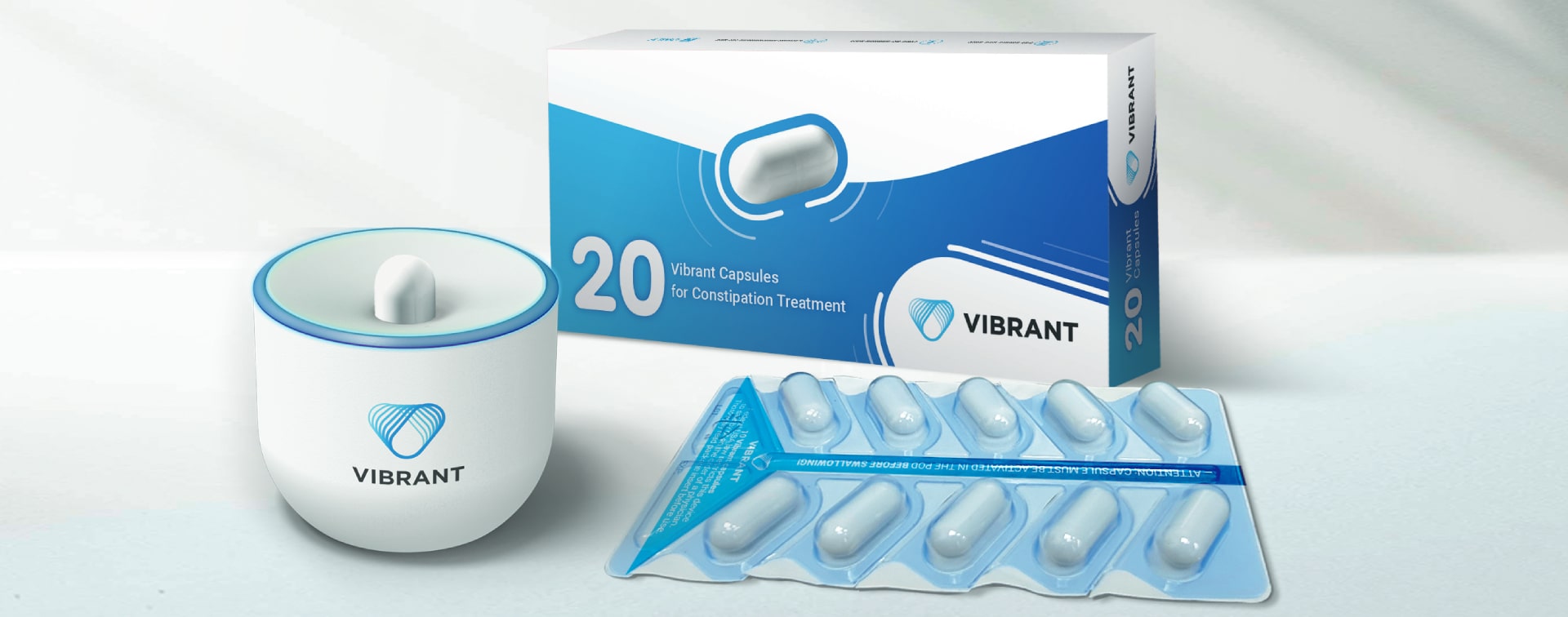ORLANDO — An intraluminal vibrating capsule called Vibrant safely relieved moderate-to-severe chronic idiopathic constipation in a dose-dependent manner, according to trial results presented at the World Congress of Gastroenterology at ACG 2017.
During his presentation, Eamonn Quigley, MD, MACG, professor of medicine at Weill Cornell Medical College, and chief of gastroenterology and hepatology at Houston Methodist Hospital, described the technology as “a vibrating capsule with a two-piece shell, flat motor, electronic card, batteries and a battery bridge, which is easy to swallow, and is intrinsically timed to have a delay mechanism, so it does not activate or begin vibrating until 8 hours after it’s been ingested in an attempt to approximate its arrival in the colon.” He added that an activation base unit transmits electromagnetic signals to the capsule to activate it, and then it vibrates to mechanically stimulate bowel movement.
Quigley discussed data from two trials evaluating the efficacy of the vibrating capsule in patients with chronic idiopathic constipation (CIC).
The first was a phase 3 randomized sham-controlled trial in which he and colleagues assigned 154 patients with CIC from 16 centers in the U.S. and Israel to take two capsules per week for 8 weeks. There was also a 2-week run-in with no medications and a 2-week washout period. Researchers defined responders as those who had at least one additional complete spontaneous bowel movement (CSBM) per week for at least 6 of the 8 weeks, plus a one-point improvement in quality of life scores.
“Overall, there did not appear to be any significant difference between active … and sham … over the 8-week period of the study,” Quigley said. “However, when a subgroup analysis was performed looking specifically at those who have at least one but less than 2.5 SBMs per week, which represented half the population, the response seemed to be better.” In the phase 3 study, 59.5% of patients in this subgroup were responders, and in a prior phase 2 study, 70% of patients in this subgroup were responders, both of which were significantly better than the sham groups.
“So, the next stage was to go forward with that particular group and to look in an uncontrolled study,” Quigley said.
The second study was a single-arm pilot study in the U.S. in which 25 patients with CIC with an average of 1.1 to 2.5 SBMs per week, swallowed five capsules per week for 6 weeks at home after a 2-week run-in period.
Overall, over 70% met the endpoint of at least one additional CSBM per week for at least 5 of the 6 weeks, and 50% had at least two additional CSBMs per week.
Both studies also showed significant improvements in constipation symptoms like stool consistency, straining, and bloating, and showed an “excellent” safety profile with no serious adverse events related to the device. Notably, patients in both the active treatment arm reported a sensation of vibration.
Quigley concluded that “the vibrating capsule was well accepted and well tolerated by subjects with chronic constipation,” and that the higher dose in the second study appeared to be even more effective than the lower dose in the randomized controlled trial subgroup with moderate-to-severe constipation.
Investigators plan to proceed with a randomized controlled trial in this patient population with this dosing schedule, he added. – by Adam Leitenberger
Reference:
Quigley E, et al. Abstract 47. Presented at: World Congress of Gastroenterology at American College of Gastroenterology Annual Scientific Meeting; Oct. 13-18, 2017; Orlando, FL.
Disclosures:
Quigley and other authors report financial ties to Vibrant, who supported the study.


